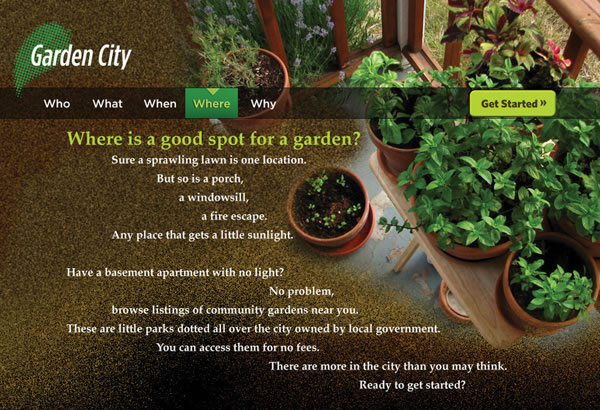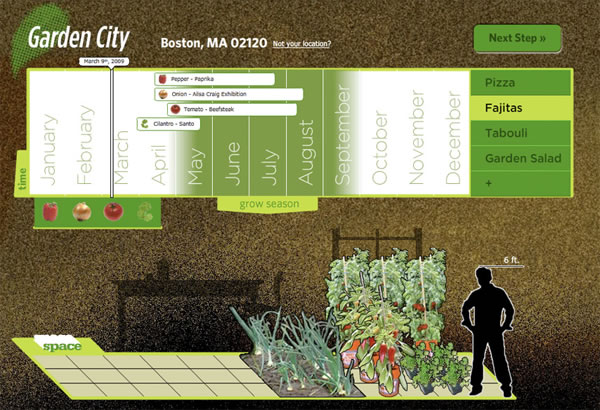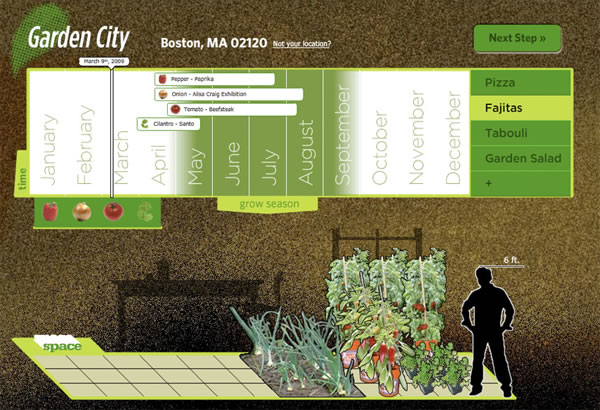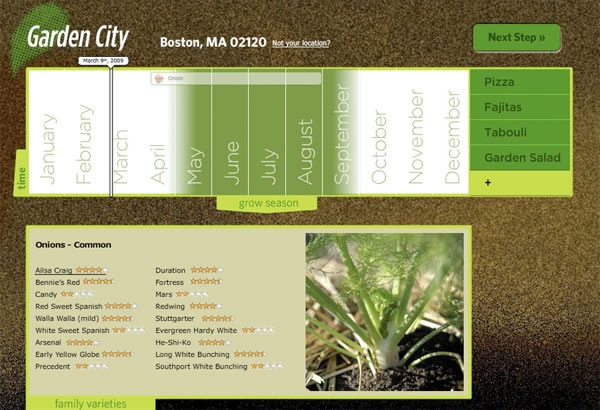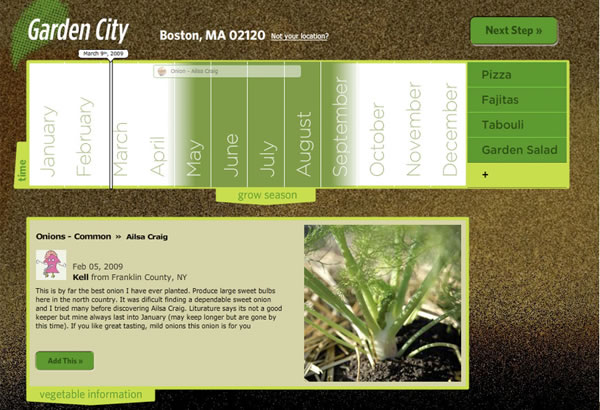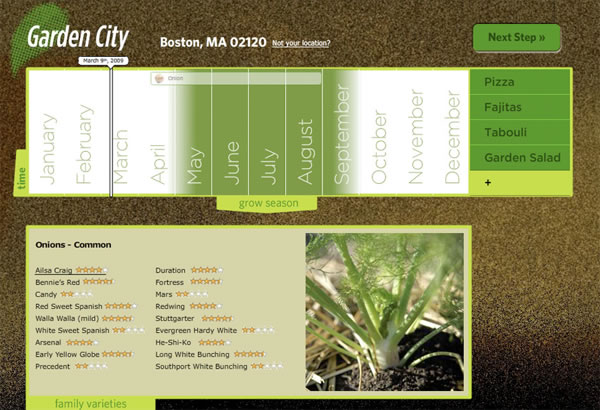Dan Johnston, MFA ’09
project
I was interested in developing a design strategy that would connect gardeners from around the world. The Garden City concept is a channel of communication designed to be used by urban gardeners of all skill levels. It is a platform for gardeners to ask questions and provide answers, or simply share information about past experiences.
Why gardening? First, this concept of locally grown food has become increasingly popular in American society over the last few years. There are many examples of artists/designers/writers developing new content in this new environmental direction. Here, I’ve included an example by Christopher Neal showing his interpretation of a war time food security poster.
So what does gardening have to do with dynamic media? It’s not the subject itself, but the systems associated with the process. Those who identify as gardeners have a strong sense of community, but only in their local area. I was interested in exploring different ways of interacting that would be of interest to gardeners. Could they find common ground based on the size of their plot? By the crops they are growing?
There were a few specific goals I had in mind when putting this project together. Most importantly, I wanted people to grow some of their own food. Since the scope of the project is focused on urban gardens, the amount of food grown would be small. That’s fine! I wanted people to have the experience of growing something from a seed, so they could have a better appreciation of how food gets to their marketplace.
A secondary goal was strengthening the locality of a place. I was hoping Garden City would cause the ranks of existing gardening communities to swell. Other practical goals included, allowing everyone to participate regardless of skill level. As well as providing a clear path for beginning gardeners to follow.
Is there a difference between gardening and farming? Isn’t it all just “growing stuff”? The following quote from wikipedia is helpful:
“The key distinction between gardening and farming is essentially one of scale; gardening can be a hobby or an income supplement, but farming is generally understood as a full-time or commercial activity, usually involving more land and quite different practices.”
This is an important distinction to make. I am not interested in addressing farmers who have lots of arable land, and have an interest in maximizing their returns. The audience here is home gardeners, working at a small scale during their free time. They are of course interested in growing things, but may may also want to meet other people, talk about gardening, or just get out of the house! Since each user of Garden City will be different, is it beneficial to compare one garden or gardener against another? I believe it would be, as someone with a rooftop garden will encounter different problems than someone growing herbs on a windowsill. The size of the user’s garden is the most useful piece of information to use when comparing two gardens.
How do you go about making those comparisons? I decided to create an open standard unit of measurement that can be applied to all gardens. An sgu (Standard Gardening Unit) would be the amount of soil contained in half a cubic foot. As more dirt means more work, I feel users with similar sgu counts would have other commonalities as well.
Will implementing an open standard for gardening be successful? I don’t know. I do know that open standards have been wildly successful in other mediums. Train travel was vastly improved when a standard thickness of rail was laid down. No more time consuming burden of switching cars as the influence of one region gave way to the next.
Now that you have defined a target audience, a goal for them to accomplish, and a quick way of comparing one garden against another, how do you build an online community? What information can be found online that is relevant to physical actions taking place in this community? During my research, I uncovered three locations where data relevant to a particular community lives. A successfully designed system would draw on all of these types of data.
First, there are facts. This is a collection of information that is scientifically true. An example of this type of data as it relates to gardening could be two simple charts. One chart outlines daily sunrise and sunset times, another lists the amount of sunlight plants need to flourish. By combining these two charts, the power of these facts emerge, revealing the optimal times for plants to grow.
Facts alone can be overwhelming, there are so many! But they can be narrowed down by a second data type, personal data. This could be anything from a users location, to their dislike of mushrooms. Since this is information of a personal nature, users may feel reserved in providing it. Getting users to trust the motives of the system is key in getting good data here.
For me, the information generated by the community social network is the most interesting. This is information largely based on opinion. These opinions may be accepted as fact by the community at large, and could even be scientifically true. A gardening example of this could be, “Planting tomatoes and marigolds together reduces pest problems.” This is interesting, as the decision whether or not to trust the information is left up to the end user. This data is at the heart of any successful system.
Keywords: community, creativity, gardening, social networking, system


